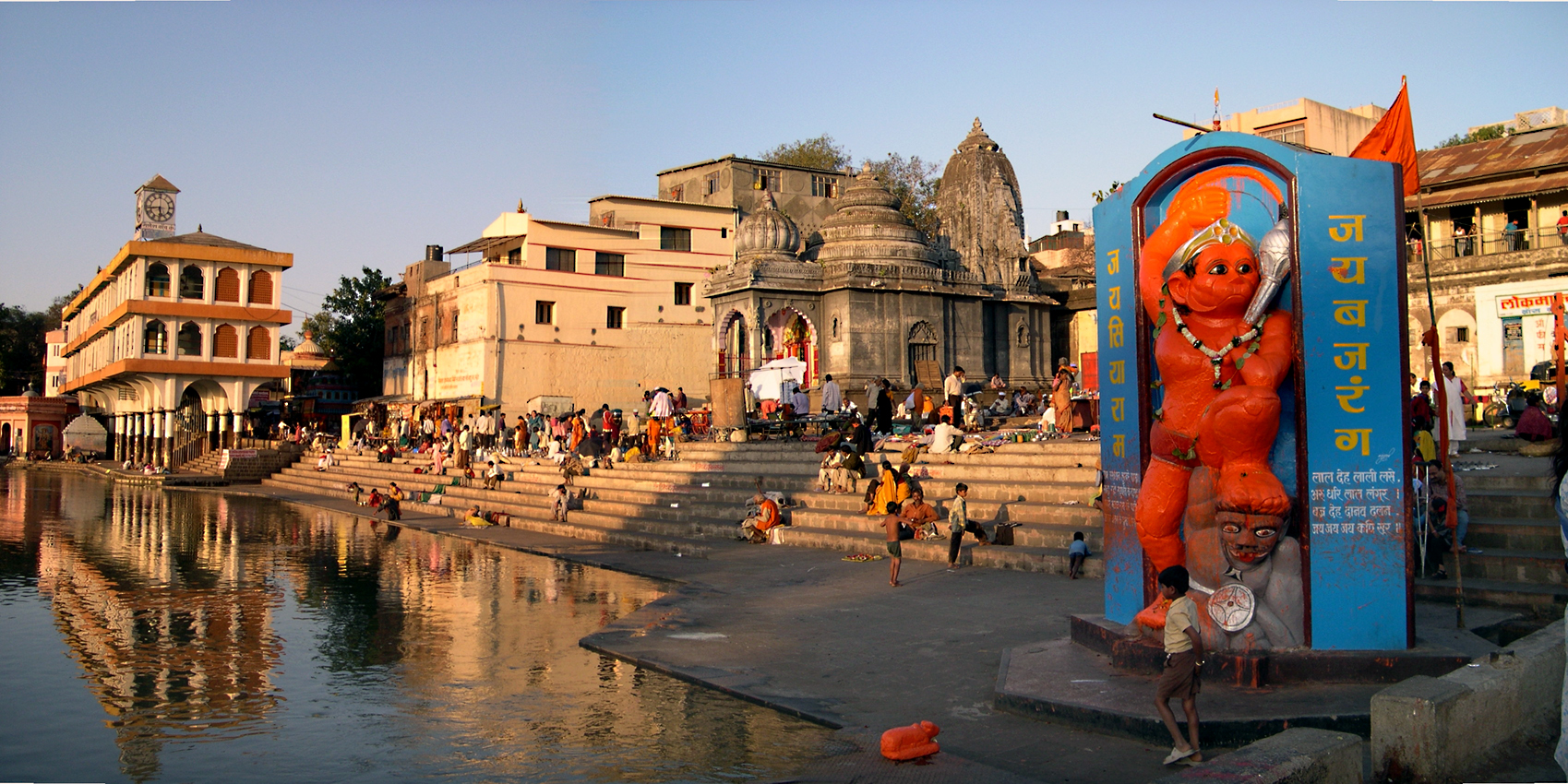Nashik is a district head quarters located on the banks of Godavari and is 185 km away from Mumbai. The climate is moderate, and is located at 635 m above mean sea level. The city has developed on both the banks of Godavari which divides the city into almost equal halves. The History of the city dates back to Ramayana. There are many references of the city in many epics as well as vedas. Today the city has developed into a metropolis with a population of 14 lakh souls. The city since old days have developed on the banks with basically the design of a religious place How-ever today it has been a flourishing Industrial Centre as well as an educational centre.
Nashik as a Holy Place
The banks or Ghats on the Godavari at Nashik are considered to be sacred. It is believed that all the Sins are washed out by taking Holy dip in the Kundas (Ponds) constructed in the river. Also by performing the last rites, Moksha is attained by the deseased soul. The river in the Ramkunda (Pond) flow from North to South, hence the river becomes Dakshin Wahini i.e. flowing towards South. This gives the Ramkunda a unique place or religious importance. Almost daily 3 to 5 thousand pilgrims come and take Holy dip on the ghats. Also during some imporant days as per Hindus Calender, the number reaches to about 15 to 20 thousand pilgrims on a day. These ocassions are almost 2 to 3 in a month.
Kumbh mela
Kumbhamella is a glorious gathering of Sadhus as well as Pilgrims at a place on some specific days. The gathering is of 10 to 15 lakh people on a day at Nashik. As per the legend, the Amrut was spilled in the Ramkunda and thus on a specific day, by taking bath on the Ghats, on attain ‘Moksha’. This period is called Sinhastha at Nashik and Kumbhamella at other places. It is held after every 12 years. The other places where Kumbhamella is held are Ujjain, Allahabad & Haridwar. The ‘Holy place’ status thus attained is directly linked with the ‘Holy dip’ in the river at the ‘Holy Ghats’. The river Godavari which passes through the city, is having length of 18 kms, in the Municipal Corporation area. There are few villages on the banks. Also the old part of the city is located on both banks. As per the religious beliefs, the stretch of the river from Ahilyabai Holkar Bridge to the Ram setu bridge is considered to be most sacred.
Ancient Temples / Kundas Constructed
Temples:
Kala Ram Temple – Year 1782 by Odhekar family
Sunder Narayan Temple – Year 1756 by Peshwas
Umamaheshar Temple – Year 1758
Nilkantheshwar Temple – Year 1747
Goreram Temple – Year 1720-1740
Naroshankar Temple – Year 1747 by Naroshankar Rajebahadur
Kundas:
Ramkunda – Year 1761-1772 by Peshwas
Murudeshwar – Year 1770
History of Kumbh mela
Kumbhamella’s are held at these places Nashik, Ujjain, Haridwar & Allahabad.
Kumbhamella held after 12 years.
It is believed that at Sins are washed by taking ‘Holy bath’ during Kumbhamella
Parvanis Holy days gather large Crowds and Sadhus.
Area of Corporation : 259.13 sq kms
Present Population : 11.00 lacs (Approx)
Present Water Supply: 120 lpcd




